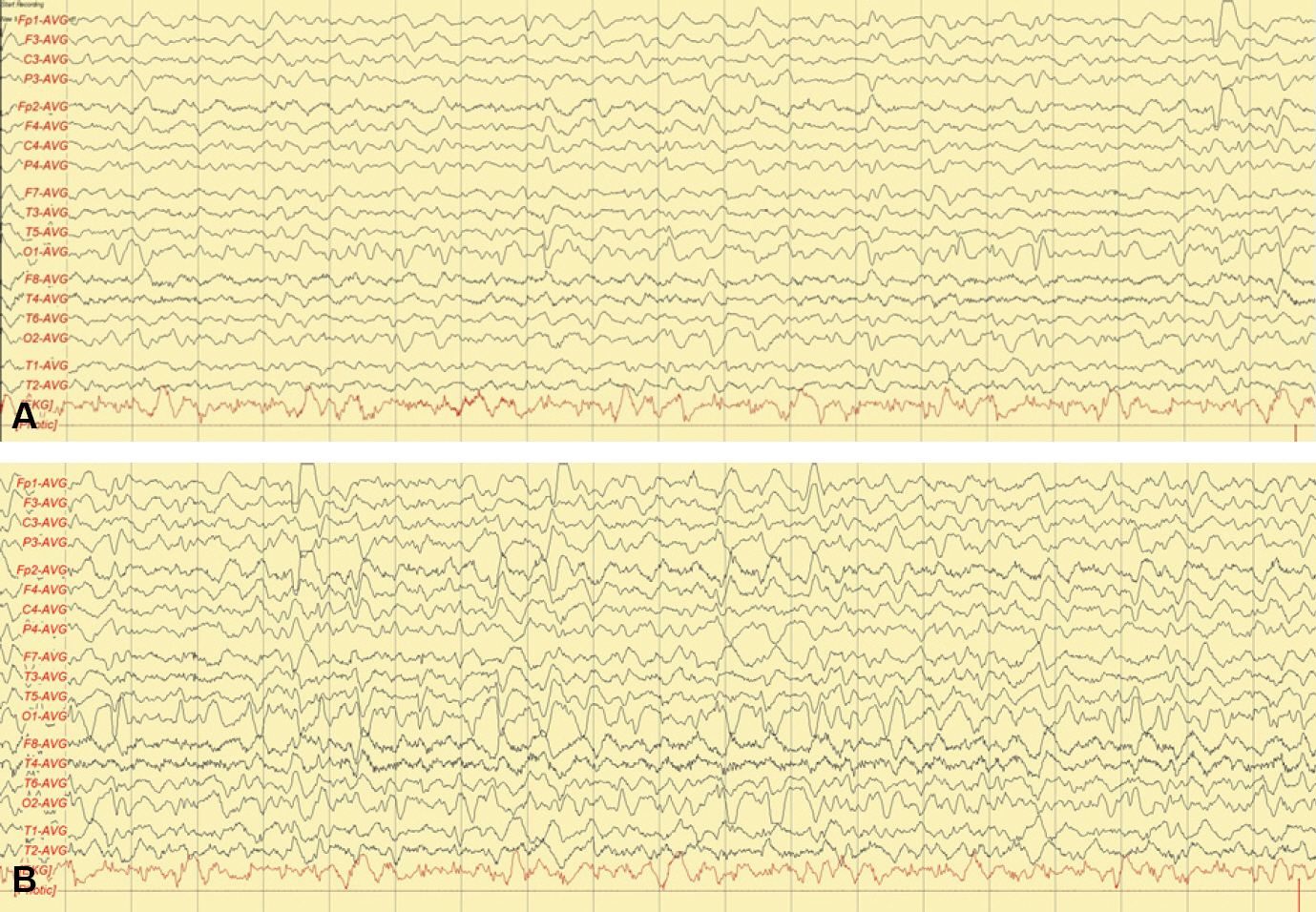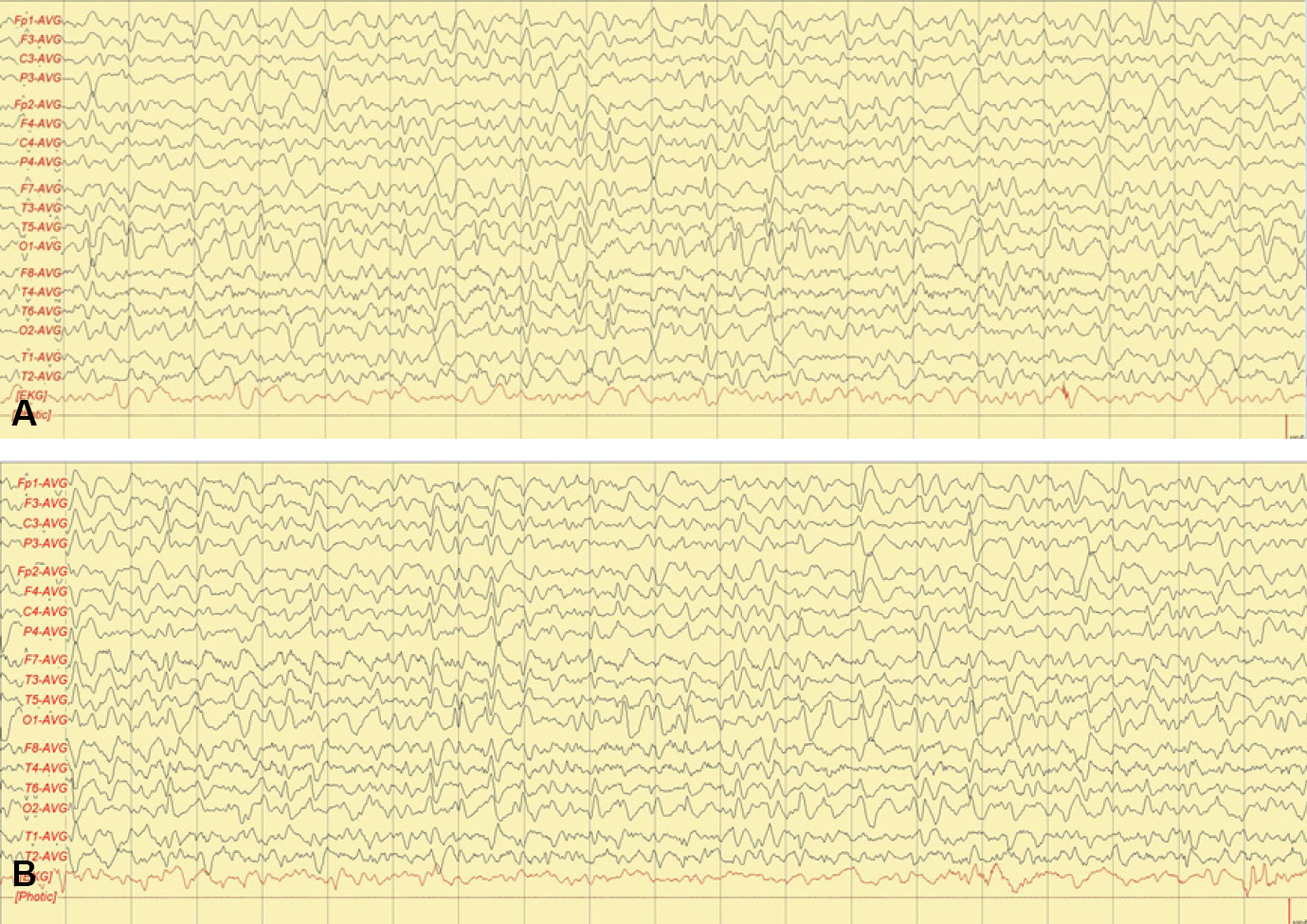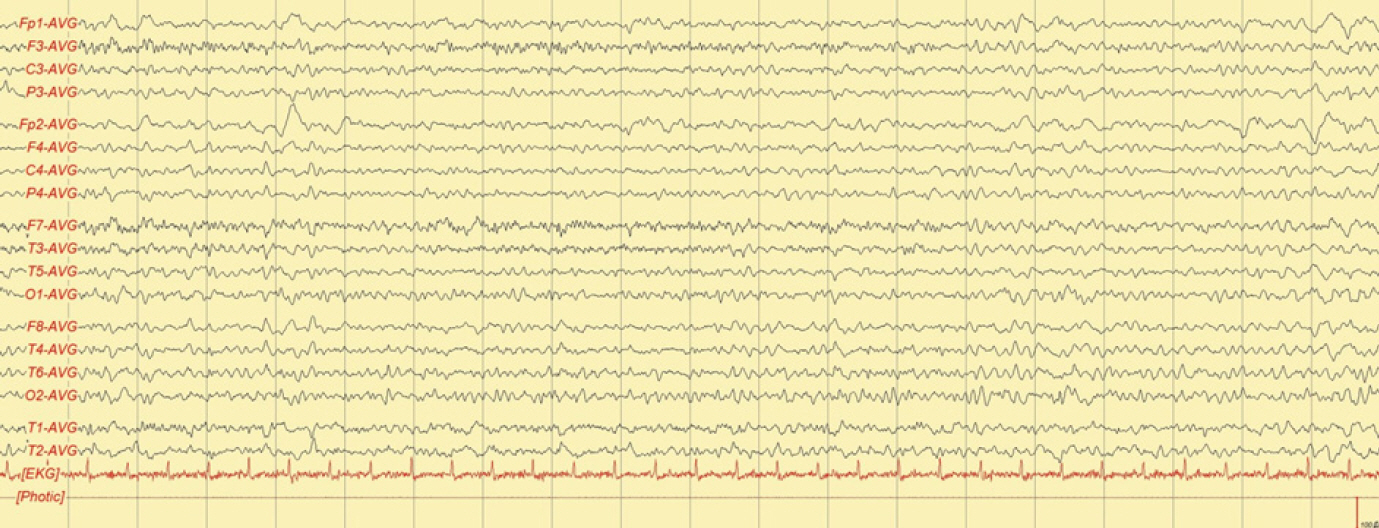Korean J Clin Neurophysiol.
2014 Dec;16(2):70-73. 10.14253/kjcn.2014.16.2.70.
Nonconvulsive Status Epilepticus Associated with Hashimoto's Encephalopathy
- Affiliations
-
- 1Department of Neurology, Eulji Hospital, Eulji University School of Medicine, Seoul, Korea. kimbkun1403@gmail.com
- KMID: 1737967
- DOI: http://doi.org/10.14253/kjcn.2014.16.2.70
Abstract
- Nonconvulsive status epilepticus usually presents with altered mentation without distinct manifestations of seizures. It may be related with various medical disorders. Hashimoto's encephalopathy is characterized by various neurological manifestations accompanied by high titers of anti-thyroid antibodies. Here, we report a patient with nonconvulsive status epilepticus caused by Hashimoto's encephalopathy who showed a dramatic response to steroids.
MeSH Terms
Figure
Reference
-
1.Niedermeyer E., Khalifeh R. Petit mal status (“spike-wave stupor”): an electro-clinical appraisal. Epilepsia. 1965. 6:250–262.2.Meierkord H., Holtkamp M. Non-convulsive status epilepticus in adults: clinical forms and treatment. Lancet Neurol. 2007. 6:329–339.
Article3.Schiess N., Pardo CA. Hashimoto's encephalopathy. Ann N Y Acad Sci. 2008. 1142:254–265.
Article4.Chong JY., Rowland LP., Utiger RD. Hashimoto encephalopathy: syndrome or myth? Arch Neurol. 2003. 60:164–171.5.Maganti R., Gerber P., Drees C., Chung S. Nonconvulsive status epilepticus. Epilepsy Behav. 2008. 12:572–586.
Article6.Kaplan PW. EEG criteria for nonconvulsive status epilepticus. Epilepsia. 2007. 48(suppl 8):39–41.
Article7.Brain L., Jellinek EH., Ball K. Hashimoto's disease andencepha-lopathy. Lancet. 1966. 2:512–514.8.Engum A., Bjøro T., Mykletun A., Dahl AA. Thyroid autoimmunity, depression and anxiety; are there any connections? An epidemiological study of a large population. J Psychosom Res. 2005. 59:263–268.
Article9.Selva-O'Callaghan A., Redondo-Benito A., Trallero-Araguás E., Martínez-Gómez X., Palou E., Vilardell-Tarres M. Clinical significance of thyroid disease in patients with inflammatory myopathy. Medicine (Baltimore). 2007. 86:293–298.10.Genovesi G., Paolini P., Marcellini L., Vernillo E., Salvati G., Polidori G, et al. Relationship between autoimmune thyroid disease and Alzheimer's disease. Panminerva Med. 1996. 38:61–63.
- Full Text Links
- Actions
-
Cited
- CITED
-
- Close
- Share
- Similar articles
-
- Nonconvulsive Status Epilepticus as the First Manifestation of Hashimoto's Encephalopathy
- Non-Convulsive Status Epilepticus as a Manifestation of Hashimoto's Encephalopathy
- A Case of Complex Partial Status Epilepticus
- Ceftazidime-Induced Nonconvulsive Status Epilepticus
- Isoflurane Anesthesia Therapy for Nonconvulsive Status Epilepticus Continuing after the Control of Convulsive Status Epilepticus: A case report





